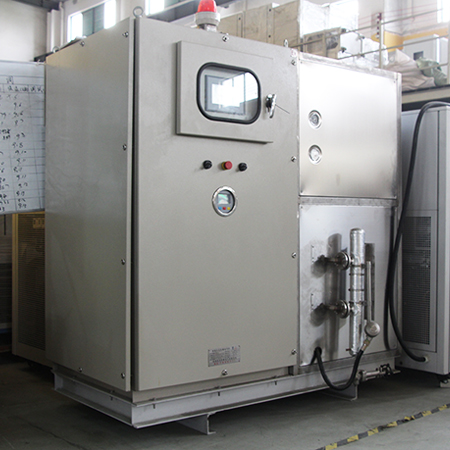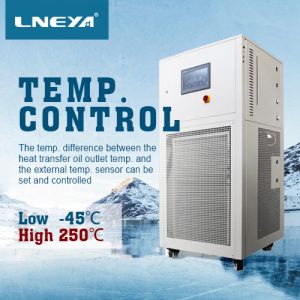Vocs gas condensation recovery unit processing instructions
With the continuous inspection of environmental protection, Wuxi LNEYA VOCS gas condensation recovery device has also received continuous attention from the public. Most chemical, pharmaceutical and industrial industries are urgently dealing with vocs gas.
The so-called VOCS is a volatile organic compound, and its composition generally includes an alkane, an olefin, an aromatic hydrocarbon, a halogenated hydrocarbon, an oxygenated hydrocarbon, a nitrogen hydrocarbon, a sulfur hydrocarbon, a low boiling polycyclic aromatic hydrocarbon, and the like. At present, most of the vocs gas is caused by industrial pollution, so the Wuxi Guanya vocs gas condensation recovery device is applied to the respiratory volatilization loss of the emptying valve in the storage tank area; the stochastic volatilization loss of the tank truck in the loading and unloading area; The solvent evaporation loss of the stirred reaction kettle; the various volatile chemicals loading, chemical storage and transportation, and the recovery of various volatile VOCS gases generated by the chemical pharmaceutical industry.
Wuxi LNEYA’s vocs gas condensation recovery unit is used for VOCS gas single material or multi-material condensation recovery. For hydrocarbon gases such as gasoline, crude oil, fuel oil, kerosene, diesel oil, heavy oil, mixed hydrocarbons, aromatic gases such as benzene, toluene, and Toluene, styrene, naphtha, etc., alcohols, ethers, ketones, esters, etc., vocs gas condensation recovery device will introduce volatile VOCS gas into the equipment cold box (the device is more condensing temperature set 3 ° C -40 ° C -75 ° C -115 ° C) can be customized for other temperature zones, follow-up requirements for condensing liquefaction. Part of the continuous production process has done a two-way switching process in the low temperature section (after one side of the ice block, it is directly switched to another heat exchange cold box condensation, while the ice block side is treated with defrost). For the recovery of solvent gas, it can meet the environmental emission standards of exhaust gas according to the demand; if the gas has low boiling point gas, it can be separated and treated again by activated carbon adsorption, membrane treatment and other processes to make the emission gas meet environmental protection requirements.

In fact, vocs gas has a relatively large impact on our lives. In winter, due to various air pollution, our life and environment can not be underestimated. Generally, it can be treated by adsorption and condensation. Adsorption can be carried out by sorbent and VOCS. Physical or chemical reaction removal, suitable for the removal of low and medium concentrations of VOCS contaminants, this method is relatively efficient and easy to control, but not suitable for high concentration of pollutants.
Raccomandazioni correlate
-
How to Choose Chiller and Injection Moulding Machine?
1133A. First way:The 1HP water-cooled chiller can be equipped with 80 tons locking force injection moulding machine, and the temperature can be controlled at 5-10 degrees.The 1HP water-cooled chiller can be equipped with 100 tons mould-locking force i...
Visualizza i dettagli -
Heat transfer oil cleaning instructions in the heat transfer oil secondary circulation system
1057The heat transfer oil secondary circulation system uses the heat transfer oil as the medium to carry out the refrigeration and heating temperature control. Then, when the user cleans the heat transfer oil in the heat transfer oil secondary circula...
Visualizza i dettagli -
How do semiconductor CVD and PVD chillers work?
1017The working principle of the chillers used in semiconductor chemical vapor deposition (CVD) and physical vapor deposition (PVD) processes is mainly to remove the heat generated during the process by circulating cooling water or special coola...
Visualizza i dettagli -
Il principio di refrigerazione del circolatore di riscaldamento e raffreddamento
1051Heating cooling circulator is the use of limited refrigerant in the closed refrigeration system, repeatedly refrigerant compression, condensation, expansion, evaporation, constantly in the evaporator heat absorption vaporization, cooling. The heat...
Visualizza i dettagli
 Refrigeratori industriali LNEYA Produttore Fornitore
Refrigeratori industriali LNEYA Produttore Fornitore











